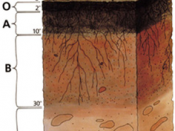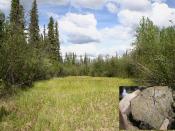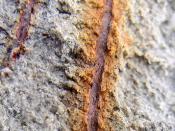The topic that I have chosen is from a periodical trade publication that we use regularly in the oil and natural gas industry. The topic is not one of great debate, but has had plenty of research. The topic of hydrocarbon vapor attenuation was selected because of the hypothesis statement and testing conducted.
Gaining a better understanding of the subsurface migration of chemical vapors is important if we are to have confidence in our ability to identify those settings where vapor transport leads to unacceptable safety and human health risks. It is also important if we are to understand the role of these processes in the natural attenuation of residual hydrocarbons in the subsurface. In recent years, much effort has gone into developing screening-level risk assessment algorithms for the former (e.g. Johnson and Ettinger 1991, API 1998) as well as more advanced general transport codes primarily used for the latter (e.g.
R-UNSAT, USGS 1997). While most published studies have focused on soil gas profiles at individual sites, little effort has gone into a broader empirical review of available field data. This type of approach should not be overlooked as it provides the opportunity to identify the range of behaviors that occur and how these might be affected by site characteristics. This approach also provides a broader basis for validating the appropriateness of different modeling approaches and the significance of different transport and fate mechanisms. With respect to the latter, confirming the occurrence of biodegradation and its attenuation of vapor fluxes at petroleum hydrocarbon impacted sites is important.
Thus, the focus of this work was an empirical assessment of available soil/gas profile data with an emphasis on petroleum hydrocarbon release sites. The objectives included the following: i) identify data sets with sufficient detail (i.e., hydrocarbon and oxygen soil/gas profiles and lithologic...


